Free and exclusive discount codes for hundreds of tours and & travel services in Iceland
Subscribe to instantly receive discount codes for tours, car rental, camper van rental, and outdoor clothing rental. Thank you! ❤️ Jon Heidar, Editor of Stuck in Iceland Travel MagazineIf you find yourself traveling along Iceland’s Arctic Coast Way—a scenic route through the country’s remote and beautiful northern coastline—don’t miss a stop in the charming town of Hvammstangi. Here, overlooking the waters of Húnaflói Bay, you’ll find the Icelandic Seal Center: a one-of-a-kind destination where curious travelers can learn about Iceland’s seal population and the efforts to protect them. It is a great starting point for seal-watching in Iceland.
What species will you see when you go seal-watching in Iceland?
Icelandic waters are home to the commonly seen harbor and grey seals, along with rarer visitors like the harp, hooded, ringed, and bearded seals. The Seal Center’s museum offers fascinating exhibits on seal biology, behavior, and their place in Icelandic culture and folklore. It’s a perfect first stop before heading out to one of the recommended seal-watching spots nearby—like Illugastaðir or Hvítserkur—which are part of the scenic “Seal Circle” driving route around the Vatnsnes Peninsula.
At the helm of the Icelandic Seal Center is General Manager Örvar Birkir Eiríksson. Örvar Birkir and his Seal Center team both promote rural development and sustainable tourism. One exciting initiative is developing an immersive virtual reality (VR) experience that allows visitors to get up close with seals—without disturbing them in the wild.
The code of conduct for seal watching in Iceland
And that’s key: while seeing seals in their natural habitat is an unforgettable experience, respecting their space is vital. The Seal Center promotes a clear code of conduct for seal watching to help protect these animals from stress and disturbance. As Örvar and his team continue their work—including the annual Great Seal Count citizen science project—they invite travelers to enjoy Iceland’s marine life in a meaningful and mindful way. I sat down with Örvar to learn more about the Seal Center and the wonderful creatures it covers so well.

Hey Örvar, thank you for taking the time for this interview. What makes a stop in Hvammstangi and the Icelandic Seal Center a must-do experience for someone planning a road trip along the Arctic Coast Way?
Hvammstangi is a charming little town just 6 km from the main road nr 1. From the west, it is the start of the Arctic Coast Way, which includes many beautiful places off the beaten track. There are various things to see in Hvammstangi, including a lovely swimming pool, wool factory Kidka, Gallerí Bardúsa, restaurant Sjávarborg, fast-food gas station Selur Matstofa, grocery store KVH, and a beautiful campsite.
The Icelandic Seal Center (ISC) is a non-profit company established in 2005 and owned by locals and people connected to the area. ISC operates a museum, an information center for travelers, and a small souvenir shop. We are open all year, every day during the summer and every working day during the winter. Last year, over 23 thousand guests visited us.
Since the beginning, our task has been seal research and the promotion of sustainable seal-watching tourism. We regard these tasks as very important because the seal population in Iceland is in a tough spot. The Icelandic harbor seal is endangered, and the grey seal is considered vulnerable despite a hunting ban on seals since 2019.
So, sustainability has always played a big part in our operation. To confirm that, we got a Green Key certification last year. We were the first Icelandic company in the group of attractions to do so, and we are very proud of that.
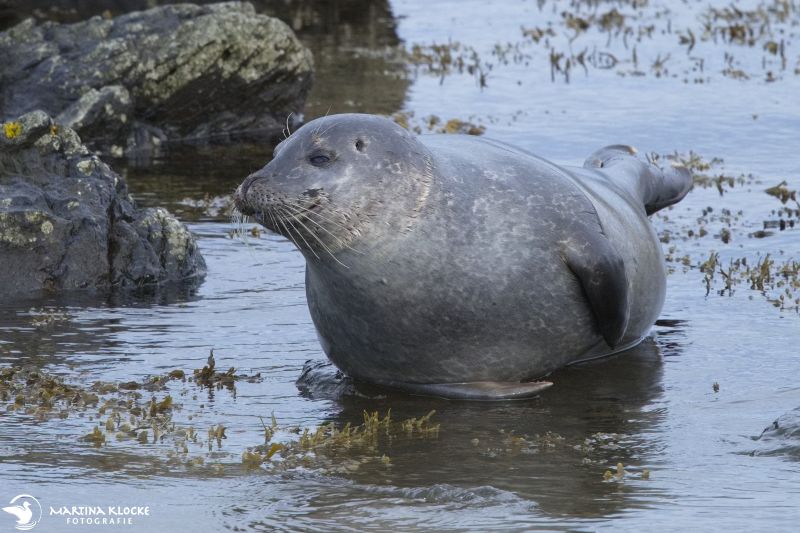
What can visitors expect when they walk into the Seal Center for the first time? Are there any highlights in the exhibition that people particularly enjoy or are surprised by?
The museum is not very big, and the average guest stops for about 20 minutes. But if you want to know everything about the seal and the walrus, you can spend a few hours going through all the information at the museum. A big part of the exhibition is from the early years of the ISC, and it includes old items, stuffed animals, a huge amount of information, and an old documentary that is always popular.
But there are also more recent things to look at. For example, an interactive screen shows the travels of the young grey seal pup Snorri. Three years ago, we added a special exhibition about the walrus in cooperation with the Icelandic Museum of Natural History. In a couple of weeks, we will add another interactive screen with presentations about various things the ISC has been involved in for decades. We have also improved the facility for kids at the museum so all our guests can relax during the visit. Nowhere in Iceland can you find more information about the Icelandic seal and the walrus.
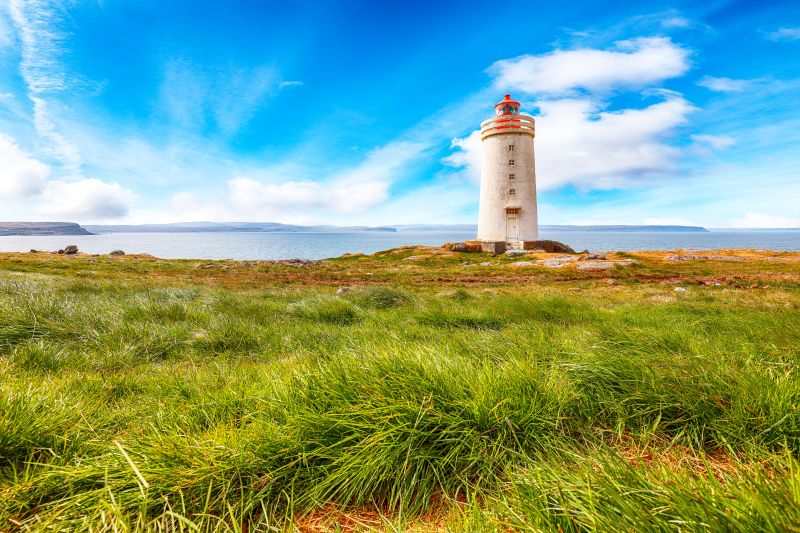
At the information center, we try to help our guests get the most out of their visit to the area and Icelandic. And, of course, advise them on seal watching – when, where, and how. At our store, you can shop for quality items at a fair price, buy a cup of coffee, and relax before the next chapter of your trip. Everything you spend at the ISC helps us continue helping the Icelandic seal; without our guests, it would be impossible. For us and the Icelandic seal, every króna counts.
Where are the best spots to see seals in the wild—and when is the best time of year to do so?
Over 500 seals live on the area’s coastline; sometimes, you can spot them from the harbor in Hvammstangi. However, we recommend going to the nearby seal-watching spots in Illugastaðir or Hvítserkur because they have a much bigger seal population.
Vatnsnes is a stunning peninsula that takes about an hour to drive, and the view from the road can be really amazing. Where the road is close to the sea, there is always a chance to see a few seals relaxing on the beach. The seals are here all year, but they spend more time on land during the summer and, therefore, are more visible that time of the year. It also helps if the weather is nice and sunny and the tide is low, preferably 2 hours before or after the low tide.
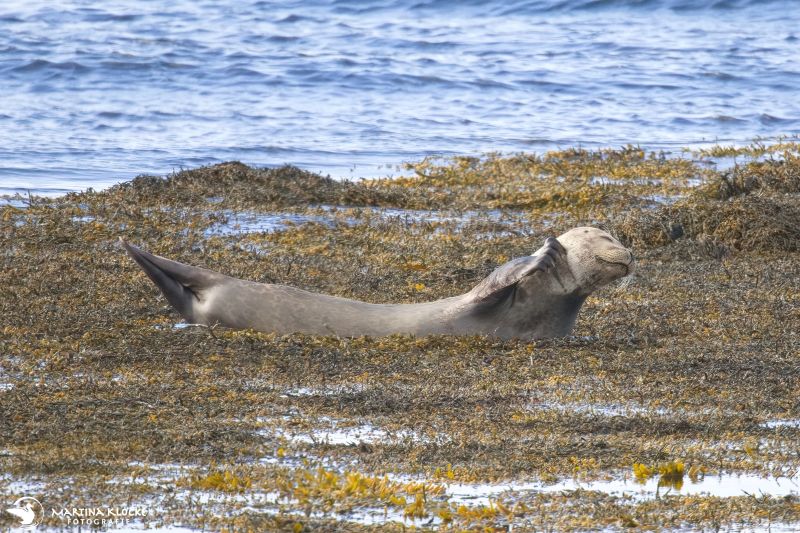
The new virtual reality experience sounds exciting! How will it change the way people go seal-watching in Iceland?
Well, this is something I’ve wanted to do for a long time. After I met up with Freyja at 1238: Battle of Iceland, the wheels started to turn. Then we got a grant from SSNV and our municipality in Húnaþing Vestra. It will become a reality in early 2026.
There are a few reasons why we want to do this. Firstly, it connects perfectly to our aim of sustainable seal watching. VR-seal watching will, of course, not disturb the seals in any way. Unfortunately, not everyone follows our “Code of Conduct” for seal watching, and that has a negative impact on the seals.
Secondly, it gives more people the chance to experience seal-watching. You might be visiting the area and the weather is terrible, the road might be closed, the tide is high or you are running out of time, then this is an excellent alternative. But, more importantly, this also gives people who might find visiting a seal-watching spot challenging another alternative. I´m talking about, for example, older or disabled people. ISC is very accessible, all on the same floor, and easy for people in wheelchairs to visit.
So it will give more people the opportunity to go seal-watching from land. The goal is to also give our guests a chance to go seal-watching underwater.
What should travelers know about responsible seal-watching in Iceland? Are there simple things people can do to help protect these animals while visiting?
Yes, the guidelines are few and quite simple. You must remember that this is the seal’s home, and you are the guest. Seals use their time on land to relax and save energy. It is difficult to do so if you are stressed about the people watching you.
So, stay at least 100 m away from the seals, but you never know. If you are lucky, they might get curious and swim closer to you. Don’t try to pat or feed them, make loud noises, throw objects at them, or fly drones above them. If you do this, you are practicing sustainable seal watching.
What are your favorite activities and places in Iceland?
Since I grew up and now work here, I’m very proud of my area in and near Hvammstangi. But I’m also a big fan of the Westfjords; there is just something special about that area. I remember recommending the Westfjords to a couple visiting the ISC. I told them there is a special kind of energy around that place that I find difficult to explain. A few days later, the couple came back and thanked me for the recommendation. They told me they now understood what I meant when talking about this special energy of the Westfjords.
What advice do you have for those visiting Iceland for the first time?
We at the ISC talk to thousands of travelers every year and are very grateful to be able to do so. My advice is to take your time. It is likely that you will only visit Iceland once, so make the most of it. Remember, visiting Iceland is not about ticking all the boxes but enjoying them.
Seal the deal: Hvammstangi is a must-Stop on Iceland’s Arctic Coast Way


